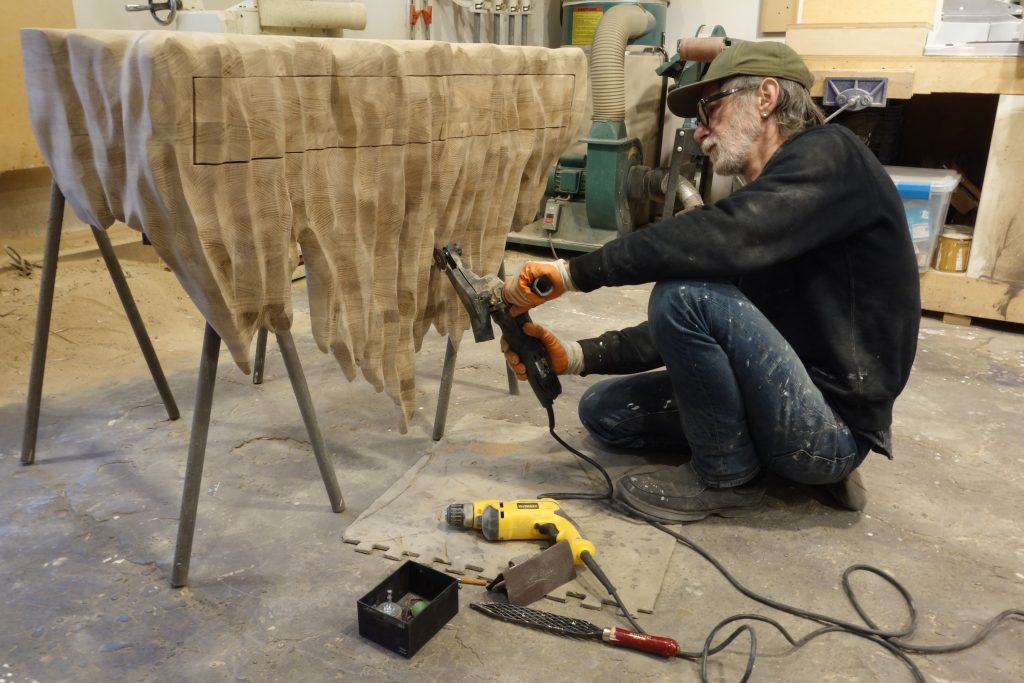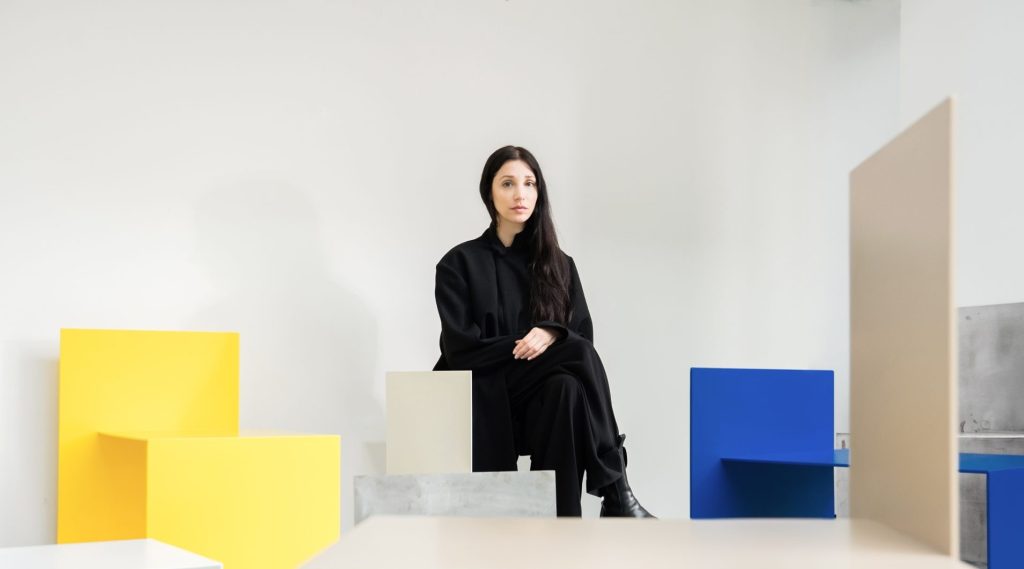
Klemens Schillinger: An Investigation of Self-Evident Design & Off-Grid Solutions
“As Henry David Thoreau chooses to live off the grid in the book Walden, for me it was interesting to create something that follows that spirit, but in a way [in which] it intersects with life in the castle.”
– Klemens Schillinger
View all of Klemens Schillinger’s work, including the “Off-Grid Lamp” from the WALDEN collection.
Schloss Hollenegg for Design has brought together twenty-two emerging designers to explore the theme of wilderness in everyday life for its latest exhibition WALDEN. Inspired by Henry David Thoreau’s book of the same name, the WALDEN collection champions the need to reassess our impact on and connection to the environment. Whether through the use of sustainable materials, innovative methods of creation, or user-driven experiences, these pieces bring audiences closer to the wild actuality of the natural world. They take cues from the castle’s interiors and surrounding grounds, bridging the relationship between man-made and nature. As described by curator Alice Stori Liechtenstein, “it is [not] necessary to choose between technology and the environment or artificial and natural, but we do need to have a different understanding of what it means to live in symbiosis with nature”.
Through his design practice, Austrian product and furniture designer Klemens Schillinger focuses on developing simple, self-evident objects that provide inspired, functional solutions for users. His work is diverse in form, material, and function: from an experimental project creating a series of ceramic vases to objects which comment on technology in contemporary society. This diversity emphasises his desire to bring considered, accessible, and aesthetically pleasing objects to life.
As a part of the WALDEN collection, Schillinger’s aesthetic works to bridge the setting of the medieval castle with the notion of Thoreau’s introspective, “off the grid” experience of nature. Klemens Schillinger was one of four designers in residence at Schloss Hollenegg this year, spending time at the castle to gain inspiration and share ideas with curator Alice Stori Liechtenstein, ultimately creating a series of “Off-Grid” Lamps. These pieces require the user to invest their own energy to light the way, encouraging audiences to reconsider their relationship with everyday objects.
Your practice has been quite multifaceted in terms of materials, forms, and functionalities, how would you describe your current approach to design?
My approach to design is not committed to a preferred material, style, or technique, but to develop self-evident yet surprising product solutions with sparse charm, considered use of material, and poetic accent. Meaning that I like to give response to tasks or briefs in a way that might seem self-evident and easy, but are also clear and understandable. I guess I am always trying [to make sure that] that object, product, or installation – in one way or the other – makes sense and communicates clearly.
But, inspiration can come from various angles. For me, mostly, it comes from observation and situations. Sometimes it can be purely the form or the material of a beautiful object or sculpture or painting, but also a historic reference – the Off-Grid Lamps, for example, reference torches that were used in castles as well as the sceptre – or how people behave or use objects – for example, the Substitute Phones.


Some of your previous pieces, for example “Substitute Phone” and “Offline Lamp”, speak to the effect of technology in contemporary society. As a product designer, why has this been an important theme to work with?
For me, design is not only about creating new and beautiful objects or products or functional solutions, but also trying to respond to sociocultural themes and problems.
The Substitute Phone is, in a way, a critical comment about the excessive use of the smartphone and, for me, the Substitute communicates this in a direct, but also humorous, way. The Offline Lamp, on the other hand, offers an actual, short term solution to that overuse, using the “out of sight, out of mind” principle; [however,] the user gets a kind of reward for handing over the smartphone. In the case of the Off-Grid Lamp, the user is also rewarded – with light – for giving their physical input.


In reference to the exhibition “Walden”, can you describe how you have approached the curatorial theme of wilderness in everyday life?
As Henry David Thoreau chooses to live off the grid in the book Walden, for me it was interesting to create something that follows that spirit, but in a way [in which] it intersects with life in the castle. [Especially with] the fact that some rooms of the castle have no electricity and sometimes the whole castle is without power because of a blackout or heavy weather conditions – being cut off from power is an intersection of castle life and Thoreau’s life in his cabin in Walden.
However, I am not sure how it actually relates to wilderness in everyday life, which I have to say, I wasn’t really aiming for.




“Off-Grid” Lamp in situ in Schloss Hollenegg
As a designer in residence at Schloss Hollenegg, what aspects of the castle and its grounds inspired you to create the “Off-Grid Lamp”?
When I was in the castle I saw these old wall fixtures for sconces or torches. Also, as mentioned before, walking through the castle at night, some rooms have no electricity, so I thought creating a modern LED torch would be interesting. Combined with the topic of Walden, I thought to make the lamp independent from the power grid or power system – [similarly to how] Henry David Thoreau chooses to live off the grid in the book Walden.
How do you envision audiences encountering or engaging with your pieces, specifically “Off-Grid Lamp”?
[For me,] the Off-Grid Lamps are more about the use than the looks, as one can actually feel the electric resistance when cranking the handle, meaning it gets a bit harder after some seconds when the battery is being charged. It also makes a nice sound when charging. This is an important part which is hard to communicate through images or videos.
I also think it’s kind of fun to use a lamp that has to be powered by physical input to get some light back. It also demonstrates how much energy a light actually needs – this can maybe help [people] not to forget turning off the light when leaving the flat.


Bio


Klemens Schillinger is a product and furniture designer based in Vienna, Austria. Since graduating from the Royal College of Art, he has been working as a freelance designer for various design studios as well as carrying on with his own work. He has worked on projects for Hem, RIM-Blackberry and Kvadrat among others
His goal is to develop simple, yet well thought-out products, design methods, and ‘Do it Yourself’ recipes. This can result in almost self-evident product solutions with a sparse amount of charm, minimal use of materials, and poetic accent.










